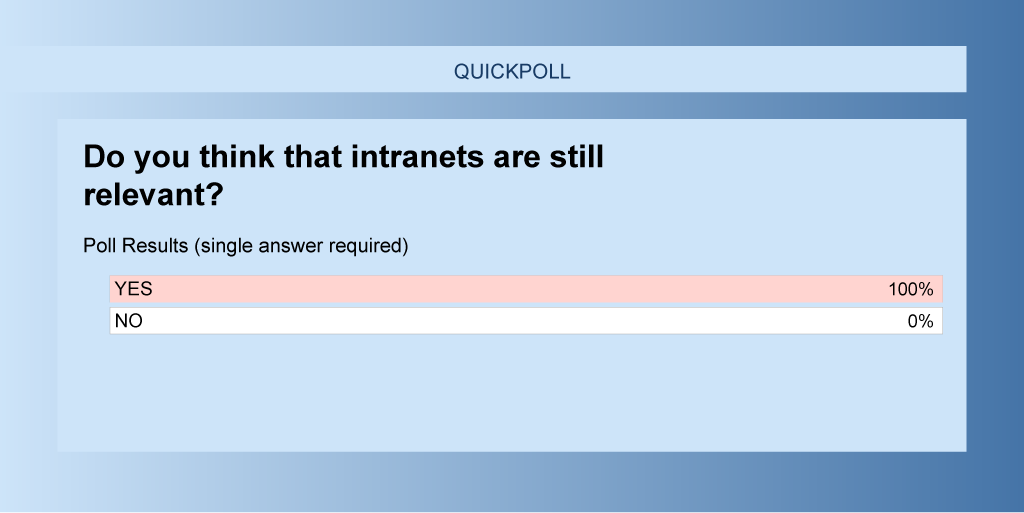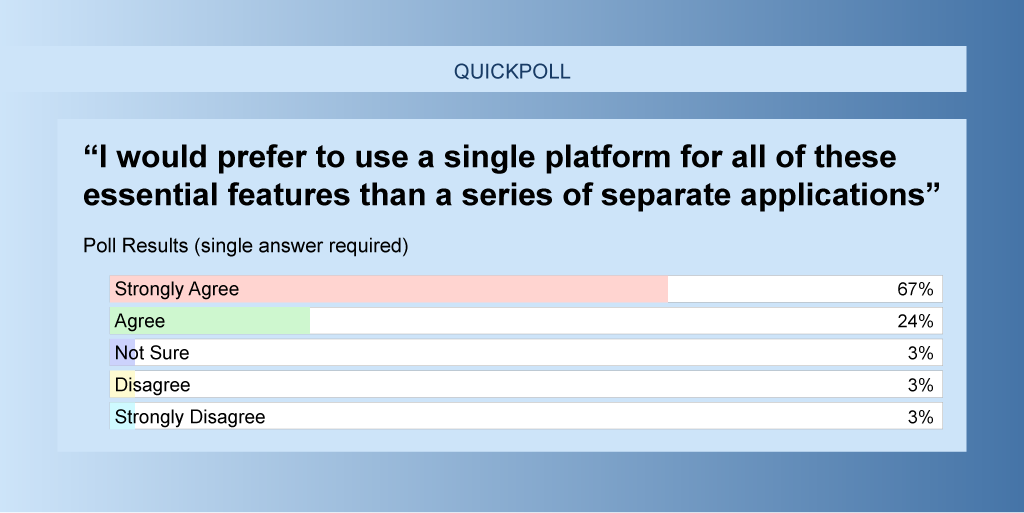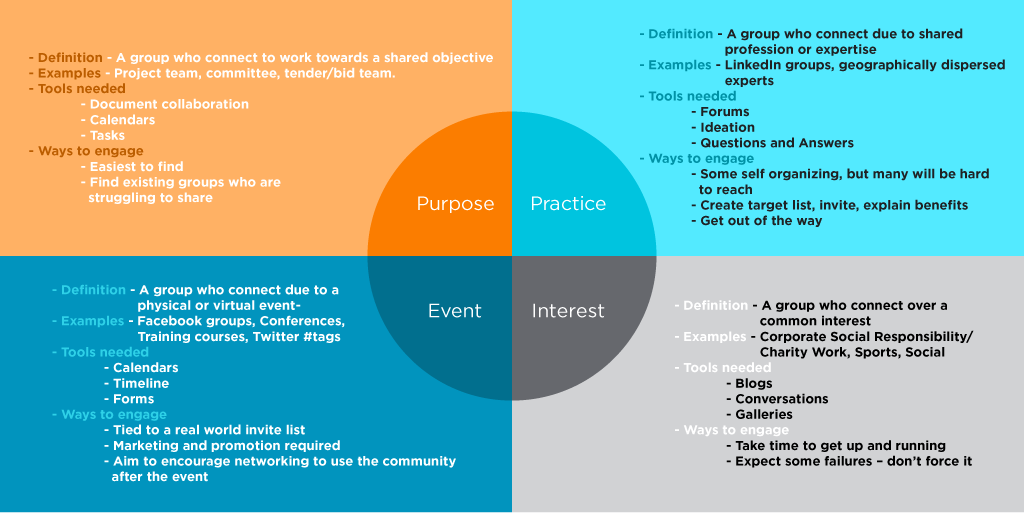Intranets: Are they still relevant?
Are intranets still relevant? Media hype may have you believe the answer is no, but when 175 internal communications and HR professionals were asked that question in a recent webinar poll, 100% answered, “Yes.”

So why do we continue asking the question, when it’s clear that those who spend the most time using intranets still believe in their benefits? The answer is partially that vendors have rebranded their enterprise tools as digital workplaces, Enterprise Social Networks, collaborative workspaces, and more. The issue with the market taking this turn is that many of those tools aren’t as complete as intranets, leaving organizations with multiple platforms to compensate – something that 91% of communications and HR professionals believe to be a negative. Who can blame them when they’re trying to encourage a collaborative culture but wrestling with disparate systems that need multiple logins and don’t talk to one another? In those cases, vital information is missed, and platforms that are supposed to be productivity tools become road blocks.

There is one group who’s been left out in this line of questioning, the one that matters most, intranet users themselves. Perhaps instead of asking whether intranets are still relevant, we should be asking, “Is your intranet relevant to your users?” Though you may know the benefits of an intranet, it’s important to work with employees to bring their concerns to the fore in intranet design and implementation. How do you give them those tools that keep intranets relevant?
Create and nurture active communities
Does your intranet cater to communities of users with common goals or interests, who may find it useful to collaborate and share insight with one another?
There are four types of community that will encourage intranet adoption – purpose, practice, interest and event.

A community of purpose connects users together through a shared objective, typically a project team. A space of this kind is easy to create and generate interest around, especially if members of the project team are spread across multiple locations. They’ll be screaming out for such a space to help them achieve their objectives more quickly and easily.
Practice communities connect people through a shared profession or expertise, again especially important for geographically dispersed experts, such as board members. This group may be harder to reach, but by housing tools that enable them to find answers and connect quickly, they will soon see the benefits.
Members of interest groups connect over a common interest, be it CSR, sports or social. This of course must be in keeping with the culture of your business in order to gain adoption and to comfort people that it is a space where they can freely comment, especially if the group is not business related.
Event communities connect due to a physical or virtual event, such as conferences or training courses. This encourages a move away from email, while maintaining important human interaction. It encourages an open and transparent culture, as well as providing a place for online networking after an event.
Make sure your intranet is available when users need it
Encouraging user adoption of your intranet is hard enough, but if it’s not available when your users really need it, full adoption becomes almost impossible – the relevancy and “what’s in it for me” factor is lost.
A recent survey of over 550 intranets worldwide showed that those hosted in the cloud encouraged 31% more employee engagement and collaboration than those intranets hosted on-premise. Why? Cloud-based intranets have transformed the way employees collaborate, as conversations, knowledge, and information are accessible anywhere in the world at any time. This means remote workers and employees working across multiple locations feel they are part of the same team, sharing experiences and gaining knowledge. What could be better for both employee engagement and productivity?
Latest research also shows that collaboration increases by 11% on intranets which have a blend of tools for collaboration, communication, and business process, compared with sites and tools which are focussed on collaboration only. This is where a modern social intranet becomes an essential tool. It does not omit business process tools from alongside the social collaborative features, which means documents and workflows also become accessible whenever they required.
Make your intranet accessible on whatever devices users want to use
Last year Google announced it was seeing more searches on mobile than desktop for the first time ever. With this in mind, and as search is the most critical feature of the intranet (according to 69% of internal communications and HR professionals), intranets must follow this trend to engage its users.
Of course this goes hand in hand with hosting your intranet in the cloud, but it also means the platform needs to have responsive design for functionality and user experience to keep their integrity. Users are accustomed to a standard of look and feel on mobile sites, so if your intranet doesn’t look good or it isn’t easy to navigate, they just won’t use it.
Create an intelligent ecosystem where even your applications collaborate
It’s quite common to find that sources of information within an organisation are spread across multiple web-based systems. This means users may have multiple log-ins, there will be numerous versions of the same information, sometimes conflicting and out of date, and vital information may get missed.
This way of working doesn’t support the demands of business operations or the employee. By creating an integrated system of applications that talk to each other, you can make sure the information employees receive is relevant and easy to access. After all, they only have to go to one place to access it!
It’s these developments where the social intranet shows how it keeps up with the demands of today’s digital workplace, looking beyond its own functionality to connect people and information to ensure it remains as relevant today as it was 20 years ago.
